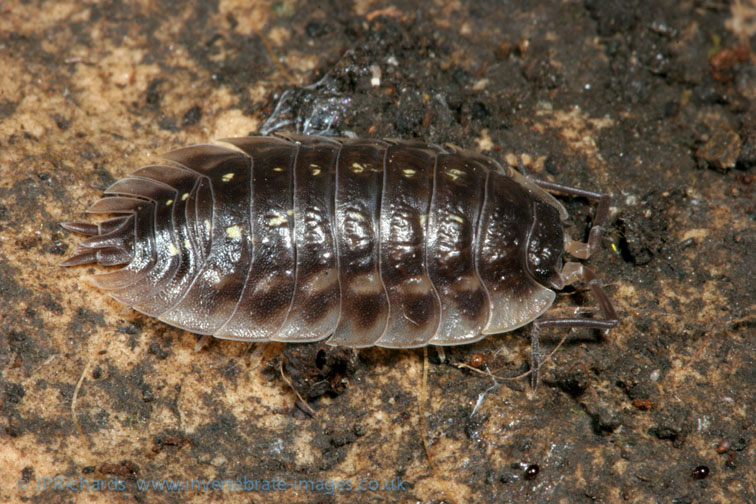Oniscus asellus ssp. asellus Linnaeus, 1758
Common name
Synonyms
Status:
GB IUCN status: Least Concern
ID Difficulty
Identification
This large familiar grey-brown woodlouse reaches 18 mm in body length. In adults the dorsal surface is smooth and it often has a rather broad, flattened appearance. The continuous body outline, three flagella segments and lack of pleopodal lungs are characteristic of Oniscus asellus. Occasionally pale coloured forms may be encountered.
Small immatures look very different to adults, with the body bearing rough tubercles and marked with a distinctive orange pattern (and are often confused with Porcellio scaber).
In south-west Britain it is partially replaced by a genetically distinct sub-species Oniscus asellus ssp. occidentalis (and intermediate forms of hybrid origin occur sporadically elsewhere).
Distribution
This species (along with P. scaber) represents the archetypal ‘woodlouse’ familiar to the general public and is abundant throughout Britain and Ireland.
In south-west Britain it is partially replaced by a genetically distinct sub-species Oniscus asellus ssp. occidentalis. Beyond this intermediate forms of hybrid origin occur sporadically throughout England (and probably Ireland).
Habitat
There are few habitat where it does not occur, but it is most abundant in damper habitats such as woodlands, hedge banks, damp meadows, coastal cliffs, waste ground, parks and gardens.
Typically, it occurs close to ground level and large numbers may be found under dead wood and stones, amongst leaf litter, within compost heaps, amongst rubbish, inside damp bathrooms and even within rotting window sills.
This summary is based on the detailed account in Gregory (2009).
References
Gregory, S. (2009) Woodlice and Waterlice (Isopoda: Oniscidea & Asellota) in Britain and Ireland. Field Studies Council/Centre for Ecology & Hydrology.
Links
World List of Marine, Freshwater and Terrestrial Isopod Crustaceans: https://www.marinespecies.org/isopoda/aphia.php?p=taxdetails&id=257580













